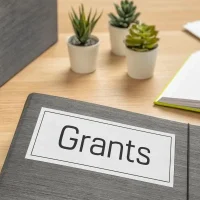Fear of rejection is a common hurdle for many NGO professionals, especially when it comes to fundraising and outreach efforts. This fear can stem from various sources, including past experiences, self-doubt, or the high stakes involved in securing funding for vital projects. However, overcoming this fear is essential for success in the nonprofit sector.
One effective strategy is to reframe rejection as a learning opportunity rather than a personal failure. Each “no” can provide valuable insights into what resonates with potential donors and what does not. By adopting a growth mindset, NGO professionals can view each interaction as a stepping stone toward improvement.
Additionally, building resilience is crucial in overcoming the fear of rejection. Engaging in role-playing exercises with colleagues can help simulate donor meetings and prepare for various responses. This practice not only boosts confidence but also equips professionals with the tools to handle objections gracefully.
Remember, even the most successful fundraisers have faced rejection; it’s an inevitable part of the process. By normalizing this experience and sharing stories of perseverance within your organization, you can foster a culture that embraces risk-taking and encourages team members to step outside their comfort zones.
Building a Strong Case for Support
A compelling case for support is the backbone of any successful fundraising campaign. It articulates the mission, vision, and impact of your organization in a way that resonates with potential donors. To build a strong case, start by clearly defining your organization’s goals and the specific needs you aim to address.
Use data and real-world examples to illustrate the urgency of your cause. For instance, if your NGO focuses on education, share statistics about literacy rates in your target area and personal stories from beneficiaries that highlight the transformative power of education. Moreover, it’s essential to tailor your case for support to align with the interests and values of your potential donors.
Research their philanthropic priorities and demonstrate how your organization’s mission intersects with their goals. This personalized approach not only strengthens your case but also shows donors that you value their contributions and understand their motivations. By presenting a well-rounded narrative that combines emotional appeal with factual evidence, you can create a compelling case that inspires action.
Cultivating Relationships with Potential Donors
Building relationships with potential donors is a long-term investment that can yield significant returns for your organization. Start by identifying individuals or organizations whose values align with your mission. Attend networking events, community gatherings, or industry conferences where you can meet these potential supporters in person.
Engaging in meaningful conversations about shared interests can lay the groundwork for future collaboration. Once you’ve established initial contact, focus on nurturing these relationships over time. Regular communication is key; send updates about your organization’s progress, invite them to events, or share success stories that highlight the impact of their support.
Personal touches, such as handwritten thank-you notes or personalized emails, can go a long way in making donors feel valued and appreciated. Remember, relationship-building is not just about asking for money; it’s about creating a community of supporters who are invested in your cause.
The Power of Effective Communication
Effective communication is at the heart of successful fundraising efforts. It involves not only conveying your message clearly but also actively listening to your audience. When speaking with potential donors, be concise and articulate about your organization’s mission and the specific impact their contributions will have.
Use storytelling techniques to make your message relatable and memorable; share anecdotes that illustrate the real-life implications of your work. In addition to verbal communication, consider leveraging various channels to reach your audience effectively. Social media platforms, newsletters, and webinars can all serve as powerful tools for disseminating information about your organization’s initiatives.
Tailor your messaging to suit each platform; for example, use engaging visuals on social media while providing more in-depth analysis in newsletters. By diversifying your communication strategies, you can engage a broader audience and keep them informed about your organization’s activities.
Utilizing Different Approaches for Different Donors
Not all donors are created equal; each has unique motivations and preferences when it comes to giving. Understanding these differences is crucial for tailoring your approach effectively. For instance, major donors may appreciate detailed proposals outlining specific projects and budgets, while smaller donors might respond better to emotional appeals that highlight personal stories of impact.
Conducting donor research can help you identify these preferences and adjust your strategies accordingly. Moreover, consider employing various engagement tactics based on donor types. For example, hosting exclusive events for major donors can foster a sense of belonging and appreciation, while community outreach initiatives may resonate more with grassroots supporters.
By recognizing the diverse landscape of donor motivations and preferences, you can create targeted strategies that enhance engagement and increase the likelihood of securing support.
Making the Ask: Timing and Technique
Timing is everything when it comes to making the ask for donations. Understanding when to approach potential donors can significantly influence their willingness to contribute. Pay attention to key moments in your organization’s calendar—such as project launches or significant milestones—when enthusiasm is high and potential donors are more likely to be receptive.
Additionally, consider external factors such as economic conditions or recent news related to your cause that may affect donor sentiment. When it comes to technique, be direct yet respectful in your approach. Clearly articulate what you are asking for—whether it’s a specific dollar amount or support for a particular project—and explain how their contribution will make a difference.
Practice active listening during these conversations; be prepared to address any questions or concerns they may have. By combining strategic timing with effective communication techniques, you can enhance your chances of successfully securing donations.
Following Up and Staying Connected
The relationship with donors doesn’t end once they make a contribution; following up is crucial for maintaining engagement and fostering long-term support. After receiving a donation, send a prompt thank-you note expressing gratitude for their generosity. This simple gesture reinforces their decision to support your organization and makes them feel valued.
In addition to immediate follow-ups, establish a regular communication schedule to keep donors informed about your organization’s progress and impact. Share updates on how their contributions are being utilized and highlight success stories that demonstrate the tangible results of their support. Consider inviting them to events or volunteer opportunities where they can see firsthand the difference they are making.
By staying connected and engaged with donors over time, you cultivate loyalty and encourage future contributions.
Handling Rejection and Moving Forward
Rejection is an inevitable part of fundraising, but how you handle it can define your resilience as an NGO professional. When faced with rejection, take a moment to reflect on the experience rather than dwelling on disappointment. Analyze what went wrong—was it the timing, the approach, or perhaps a misalignment of values?
Use this analysis as an opportunity for growth; seek feedback from colleagues or mentors who may offer valuable insights. Moving forward after rejection requires a proactive mindset. Instead of viewing it as a setback, consider it an opportunity to refine your strategies and improve future interactions with potential donors.
Keep in mind that every successful fundraiser has faced rejection at some point; it’s how you respond that matters most. By maintaining a positive outlook and focusing on continuous improvement, you can build resilience that will serve you well in your fundraising endeavors. In conclusion, navigating the world of nonprofit fundraising requires a multifaceted approach that encompasses overcoming fear, building strong cases for support, cultivating relationships, effective communication, tailored strategies for different donors, strategic timing in making asks, diligent follow-up practices, and resilience in the face of rejection.
By implementing these actionable tips and learning from real-world examples, NGO professionals can enhance their fundraising efforts and ultimately drive greater impact for their organizations and the communities they serve.
In the realm of fundraising, understanding the nuances of donor engagement is crucial, as highlighted in “The Art of Asking: Approaching Donors Without Fear.” A related article that complements this topic is the “How-to Series #2: Gender Equality and Sustainable Project Management,” which provides insights into creating impactful and sustainable projects. This article can be particularly beneficial for fundraisers looking to align their projects with gender equality goals, thereby appealing to a broader range of donors. For more information, you can read the full article here.









































